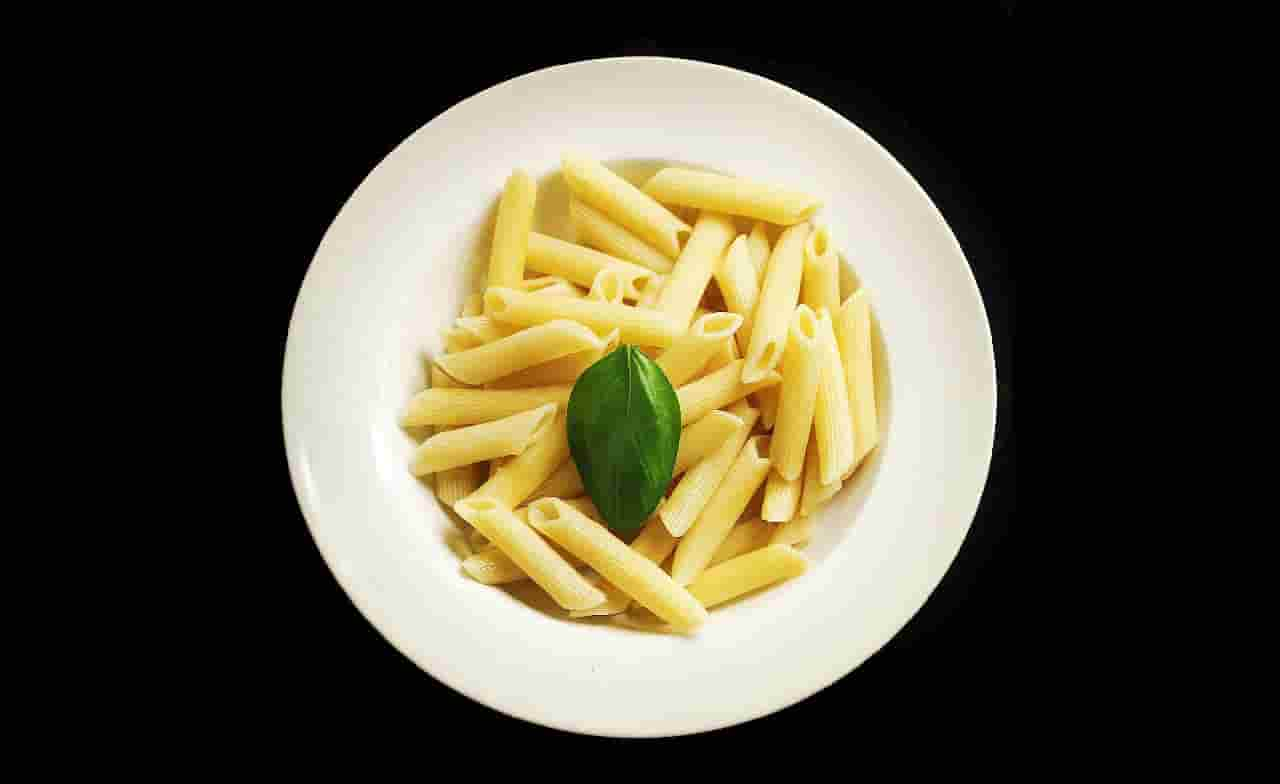Living on a student budget is never easy, and it’s harder when you have to manage your daily expenses, social life, and classroom expenses. While eating out is tempting, it’s cheaper to buy staples in bulk, follow cheap meal ideas, and cook at home whenever possible.
You can do many things to save money in college, including following a basic college grocery list. A basic college grocery list for students on a budget will save money. The best way to ensure that you buy only what you need and will use is to have a basic grocery list.
Here’s a basic grocery list for students on a budget:
- Cereal and granola
- Yogurt
- Peanut butter or other nut butter
- Sliced bread
- Instant ramen
- Butter or butter substitutes
- Canned soup
- Cooking oil and cooking spray
- Dry pasta
- Canned fish
- Rotisserie chicken
- Eggs and egg substitutes
- Popcorn
- Trail mix
- Pancake mix
- Coffee powder and tea leaves
- Flour, rice, and other grains
- Frozen vegetables
- Tinned fruit
- Canned legumes
- Herbs and spices
- Seasonal fruits and vegetables
- Condiments
- Stock cubes
- Wraps, flatbreads, and tortillas
- Milk and cheese
If you’re in college and want to know how to live and eat on a budget, you’re in the right place! If on EBT, and wondering does Amazon take EBT for these items? They do!
Read on for more information about these pantry staples, and know why they’re essential for your grocery list, especially if you’re on a budget.
1. Cereal and Granola
Breakfast is an important meal, but students typically don’t have a lot of time or energy to prepare breakfasts.
Cereal isn’t the healthiest of breakfasts, but granola is a reasonable alternative, and there are healthy versions of cereal on the market. Having a box of cereal or granola in the cupboard is a guarantee that you get a quick breakfast, no matter how busy you are. Granola also makes for a good ingredient for overnight oats and desserts and is fairly versatile in the average kitchen.
2. Yogurt
Yogurt is a valuable item to have in your pantry because of its versatility. It can be eaten on its own or added to other dishes. It’s excellent in breakfast dishes or eaten with granola and nuts as a snack.
Because of this versatility, yogurt is a must-have on your grocery list. Be careful to read through the ingredients to avoid added sugars, and you’ll have a healthy snack on hand for whenever you get a bit hungry.
3. Peanut Butter or Other Nut Butter
In general, peanut butter and nut butter are fantastic staples that are useful for various meals. They complement sweet and savory dishes, on top of toast for breakfast, and eaten independently.
They’re easy to find, require no preparation on their own. They’re also a great source of cheap protein and necessary fats, which will keep your brain sharp and ready to get through all your college assignments. If you follow frugal living, peanut butter is commonly used for meals.
4. Sliced Bread
Bread has been a basic college grocery list pantry staple for people across millennia. It’s cheap, easy to store, and a great source of carbohydrates.
Depending on the quality, you’ll find a range of prices, and while you might be tempted to go straight for the cheapest available white bread, do consider wheat or whole grain. Not only is wheat or whole grain bread healthier, but it’s also more filling and will keep the hunger at bay for much longer.
Bread is excellent on its own, toasted, as the main ingredient for sandwiches and as an accompaniment for pasta, soups, and sauce-based meals.
5. Instant Ramen
No food item is as ubiquitous with college life as instant ramen. If you are a college student trying to figure out how to budget your money, look to ramen noodles. While instant ramen gets a bad rap for being unhealthy, it’s still cheap, filling, and easily modified to make it a lot healthier.
You can cook the noodles in broth, toss in vegetables, meat, or eggs, and customize it to your tastes. Instant ramen is a quick, cheap, and easy meal that’ll keep you fed when your cupboard is empty of everything else.
6. Butter or Butter Substitutes
Butter or butter substitutes like margarine or vegan alternatives are essential and can be frozen for ease of storage. Unsalted butter lasts about five months in the freezer, while salted butter will last about nine months since the salt acts as a preservative.
You can buy butter in bulk and keep it frozen till you’re ready to use it. When you’re ready to use the butter, you can either thaw it out in the fridge or grate it over toast if you only want a little bit.
7. Canned Soup
A favorite on any basic college grocery list is soups. Soup is an easy meal, and while you might buy a couple of tins and leave them to gather dust in your cupboard, they’ll come in handy if you fall sick.

While canned soup tends to have very high sodium levels, it’ll keep for a long time because of the sodium. So grab yourself a couple of cans of tomato and chicken noodle soup and stick them in your cupboard. Most soups last anywhere between six months to one year.
8. Cooking Oil and Cooking Spray
Cooking oil can be pretty much any kind of vegetable oil you prefer, or more than one kind if you have the budget. Canola, rice bran, sunflower, and safflower oils are all cooking oils without any distinct flavor.
Other oils that can be used for cooking include coconut, sesame, mustard, and olive oil. However, it’s important to keep in mind that each of these will impart a distinct and, in the case of mustard oil, particularly intense flavor to your food.
Cooking spray is useful for when you’re trying to stay oil-free but using pans that aren’t non-stick. It’s also helpful in greasing baking pans.
9. Dry Pasta
Pasta is a pretty standard pantry essential, especially considering how long it can last in a pantry. You can get pasta made of whole wheat, semolina, or other gluten-free flour.
Pasta is a quick meal — most packets of dry pasta recommend only about 9-12 minutes of boiling. Many people who are living stingy eat pasta heavily. If you have canned pasta sauce, you can have a meal ready in a quarter of an hour.
You can make the sauce yourself, which isn’t particularly complicated. A basic white sauce or tomato sauce can be pulled together in about as much time as it takes for the dry pasta to boil.
10. Canned Fish
Canned fish like sardines, mackerel, crab, tuna, or salmon is a cheap and easy way to keep protein on hand and stored for long periods. They’re a great source of healthy omega-three fatty acids.
Throw them into a seafood pasta, onto sandwiches, and into wraps for a quick, healthy meal.
11. Rotisserie Chicken
When going out to eat and paying high prices, you must wonder, is eating out a waste of money, especially chicken? Chicken dishes at a restaurant, yes. Rotisserie chicken at home is affordable.
Whole rotisserie chicken is cheap, delicious, and can be a full meal for a group of people. And if you’re just one person, there are innumerable ways that you can repurpose the leftovers to make a whole week’s worth of meals for yourself.
Not only is rotisserie chicken delicious, but it’s also low in saturated fats and makes for a meal that’s high in protein. Keep an eye on the sodium levels of the chicken in your local stores, and you’ll have a relatively healthy meal.
You can add your rotisserie chicken to wraps, tacos and quesadillas, burgers, salads, sandwiches, and more. The versatility is a key factor in why it should be on every college student’s grocery list.
12. Eggs and Egg Substitutes
Eggs are nutrient-dense, excellent sources of protein, and help improve good cholesterol. They’re also a vital ingredient in many baked desserts, providing structure in a lot of cake recipes.
More importantly, eggs are cheap and easy to cook. They can be boiled, scrambled, poached, or fried and eaten on their own or added to meals to make them heartier. They’re also excellent as a sauce thickener.
Eggs are a great option for breakfast or as a snack between meals and a great energy source.
13. Popcorn
Air-popped popcorn that isn’t drowned in butter or salt is a healthy, cheap snack that’s low in calories and high in necessary dietary fibers. This also means that popcorn is pretty filling, so you won’t end up eating an unhealthy amount.
Like most items on this list, popcorn is easy to store, easy to cook, and quick to put together. More importantly, it’s also cheap.
14. Trail Mix
Trail mix has been America’s favorite snack for a long time. This mix of nuts, seeds, grains, and dried fruit is the ideal snack.
The fats and protein in the nuts and seeds are filling and keep you from getting too hungry. They’re also really healthy. The grains and dried food have the sugars necessary to keep you going till the next meal.
Some trail mixes also have chocolate chips in them, which is a delicious bonus and a healthy magnesium source.
15. Pancake Mix
Handy pancake mix is great to have for when you want a more indulgent breakfast than cereal or eggs and toast. The mixes are easy to use, saving you time in the kitchen. They’re also reasonably priced.
If you budget by paycheck, being on a budget doesn’t have to mean that you don’t get to have any treats. Keep a pancake mix handy for Sunday mornings when you’ve got the time to sit down and enjoy your breakfast with your morning cup of coffee.
16. Coffee Powder and Tea Leaves
One way how to deal with lifestyle inflation is to brew your own drinks. Depending on your preference, keeping coffee powder or tea leaves (or dust) on hand is much cheaper than trying to buy coffee from the local coffee shop.
Of course, getting the occasional frappe from a coffee shop isn’t going to break the bank, but if you’re on a budget, it can make a real difference to make your own cup.
More importantly, this also means that you have easy access to your dose of caffeine without leaving your own home. Having easy access to coffee or tea can make a lot of difference when you’ve got a long night of assignments ahead of you, so keep a tin handy.
17. Flour, Rice, and Other Grains
Like bread, flour, rice, and other grains like couscous are important and cheap additions to every meal. Having these basic pantry staples on hand makes it easy for you to cook just about any meal.
While you don’t need all the grains, you could keep flour and rice handy as these can be used across all cuisines.
Flour can be used to make your own bread, cakes, pies, and wraps, while rice can be cooked and eaten on its own or with some steamed vegetables or gravies. You can also make Italian and Asian rice-based dishes, which are delicious, filling, and won’t break the bank.
18. Frozen Vegetables
Frozen vegetables keep very well and are a great alternative to fresh-cut vegetables, which might be expensive. They also have more or less the same nutritive and flavor profile as fresh vegetables because of the freezing process.
You can use frozen vegetables to bulk up sauces in pasta and curries and even pad out your ramen.
19. Tinned Fruit
While fresh fruits can be expensive, especially if they’re not in season, tinned fruit is affordable, and has a long shelf life. If you are living below your means, tinned fruit is probably part of your diet.
The longevity of tinned and canned food is one of the primary reasons why they’re essential to any grocery list made on a shoestring budget. The long shelf life lets you buy them in bulk and spread them out over several meals over a long time.
Tinned fruits are great as a healthy dessert and suitable for quick stovetop or baked desserts as well.
20. Canned Legumes
Legumes of all kinds are excellent plant protein sources and tend to be cheaper than most deli meats. Canned chickpeas, baked beans, pinto beans — they’re all great to be eaten on their own, added to curries, pasta and sauces.
Beans are also a filling meal when converted to chili, vegetarian, or otherwise. Chickpeas can also be used to make hummus, which is a great protein-rich spread.
21. Herbs and Spices
Seasoning your food is crucial for flavor and micronutrients. You need the basics of salt, sugar, and pepper. Additional herbs and spices you could get include:
- General Italian seasoning or taco seasoning
- Chili powder or chili oil
- Basil
- Garlic
- Onion powder
- Cumin
- Bay leaves
- Cinnamon
- Lemons
- Coriander
Buy these herbs and spices to your tastes and based on your favorite flavors.
If you’re unsure what to get, sniffing the spice (from a safe distance) to see if you like the smell is a great place to start! You can pick up herbs and spices anywhere, including 24 hour pharmacies near me open now for convenience.
22. Seasonal Fruits and Vegetables
While canned fruits and frozen vegetables will do the job, sometimes you need some fresh produce.
A great hack how to save money on groceries is to buy produce available. To get vegetables and fruits cheaply, make sure you get fruits and vegetables that are in season. This is when they’ll be readily available and affordable.
Typically inexpensive fruits include apples and bananas. Cheap vegetables like potatoes, spinach, and lettuce are also available year-round.
You can also get budget-friendly fruits and vegetables if you head over to your farmer’s market and pick out the distorted ones, which are set aside for not being aesthetically perfect.
23. Condiments
Condiments enhance pretty much every food, but be careful only to buy the ones you know you’re going to use. And unless you make a habit of going through a bottle of ketchup a week, buy smaller quantities than you need because condiments won’t be used as often as you expect they will. They are necessary on any basic college grocery list.
Mayo and ketchup are pretty standard condiments in the average kitchen. Other condiments you could get include soy sauce, mustard, and vinegar.
24. Stock Cubes
Making stock is cheap and a great way to use up food waste like bones and vegetable peels, but stock cubes are convenient in every way. They take up very little space, and you only need a little bit to add a lot of flavor to your food.
Stock is used for soups, curries, sauces and has health benefits. You could also use your stock cubes for cooking your ramen and pasta, adding flavor and body to your regular meals.
25. Wraps, Flatbreads, and Tortillas
While you could make your own flatbreads, premade wraps, flatbreads, and tortillas are convenient and not that much more expensive. They’re not as labor-intensive as making your own wraps and a great way to put them together when you want a quick meal.

You can throw together a quick burrito or dumpling and use these with your gravies, pasta, and chili.
26. Milk and Cheese
Milk and cheese are pretty essential sources of fat and Vitamin D for a basic college grocery list. If you’re off animal products, you can, of course, pick up vegan alternatives like nut milk or oat milk and vegan cheeses.
Regardless of the type, having a carton of milk around is handy not only to consume on its own but also to add to any number of recipes. Milk adds sweetness, tones down spices, and can substitute for cream if you throw it in with some butter.
Cheese is a fantastic snack on its own and delicious on pretty much everything from pizzas to tortilla bakes.



